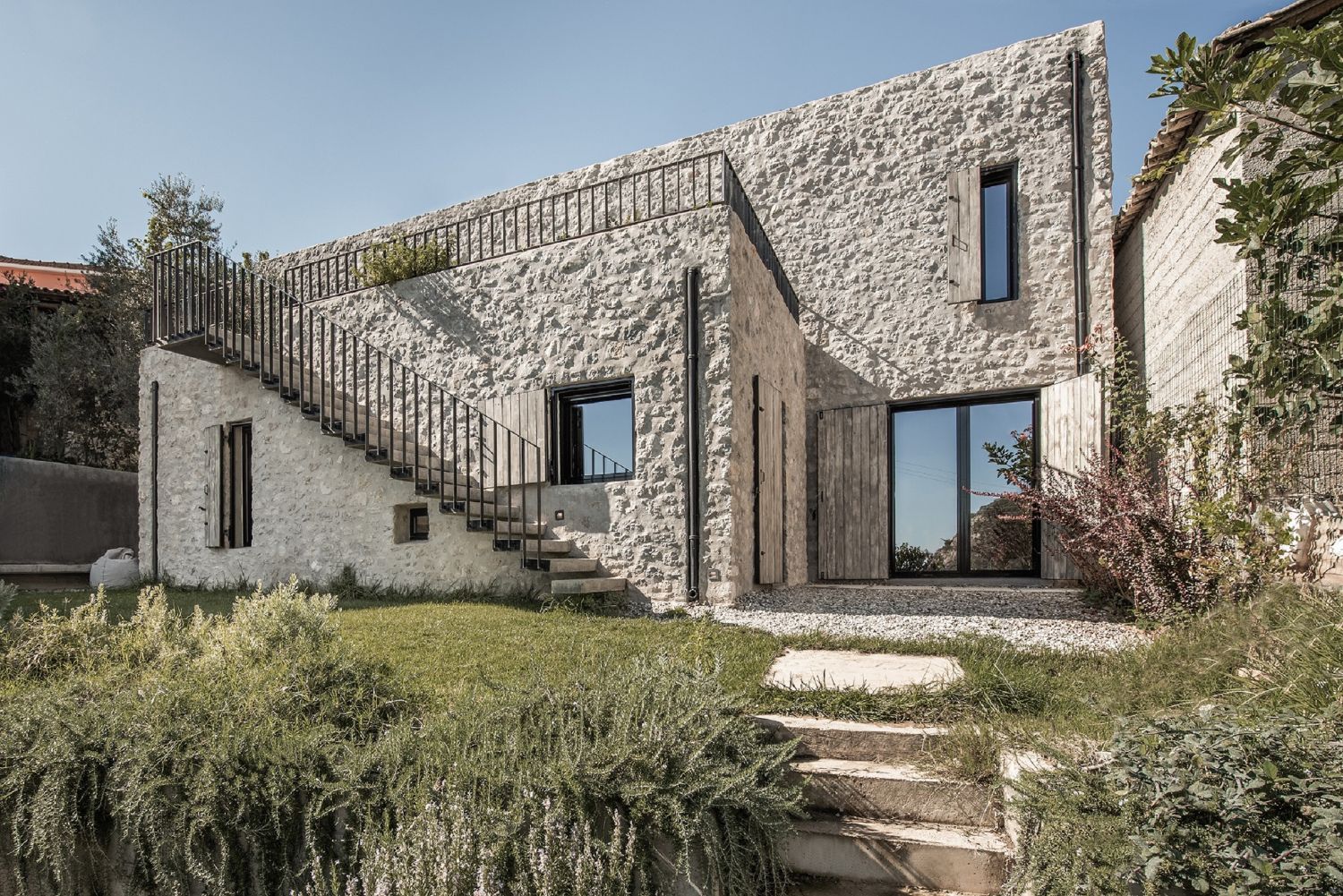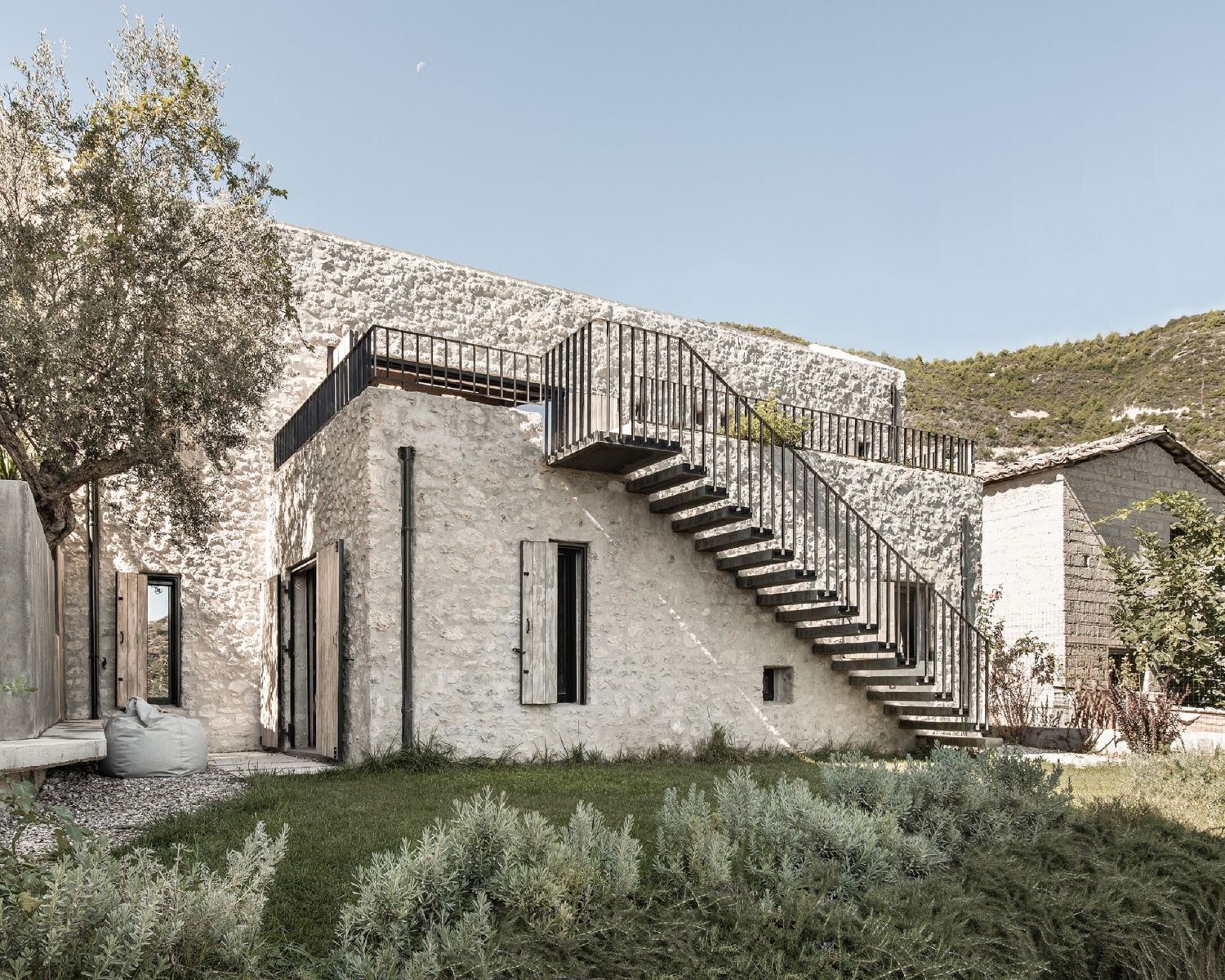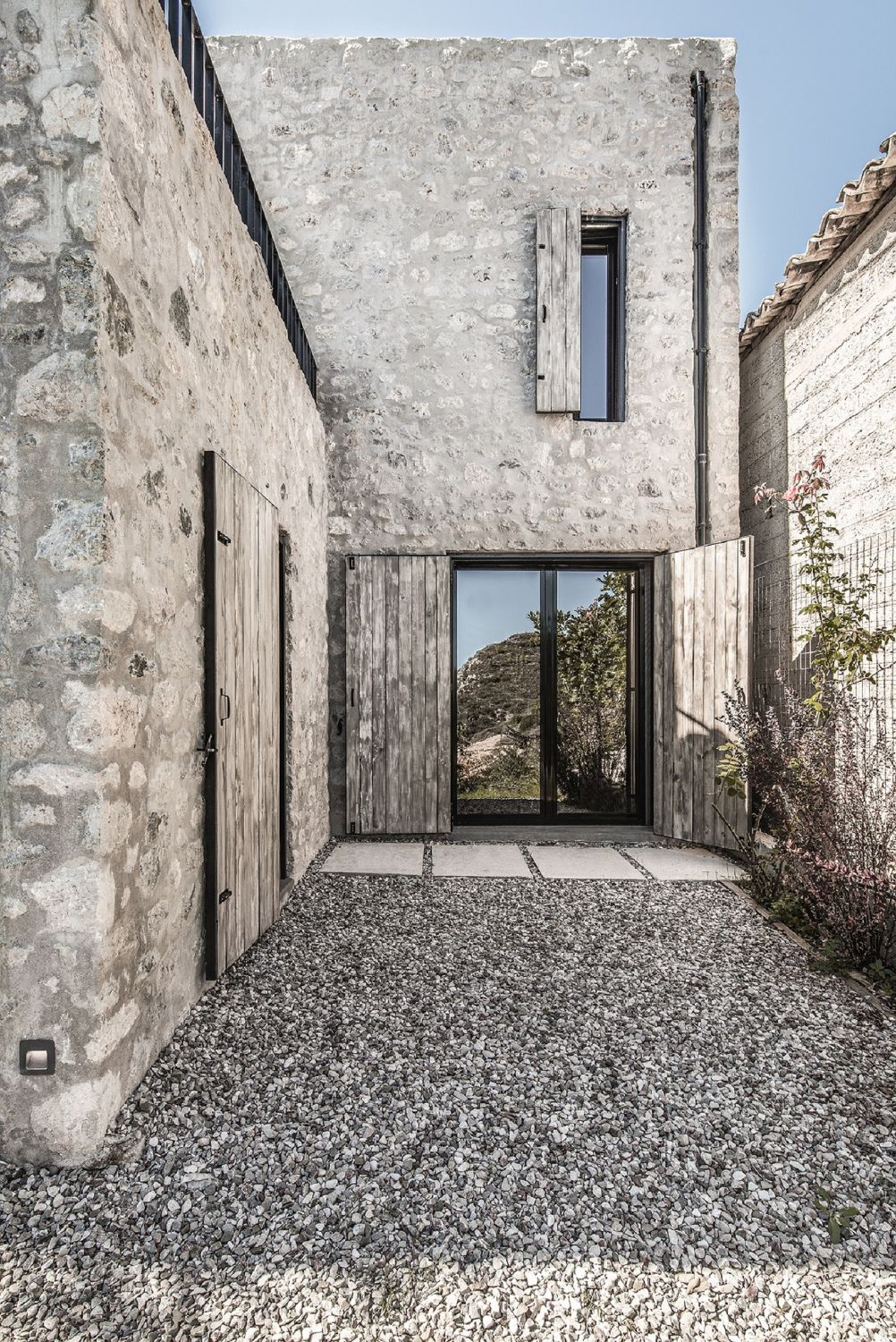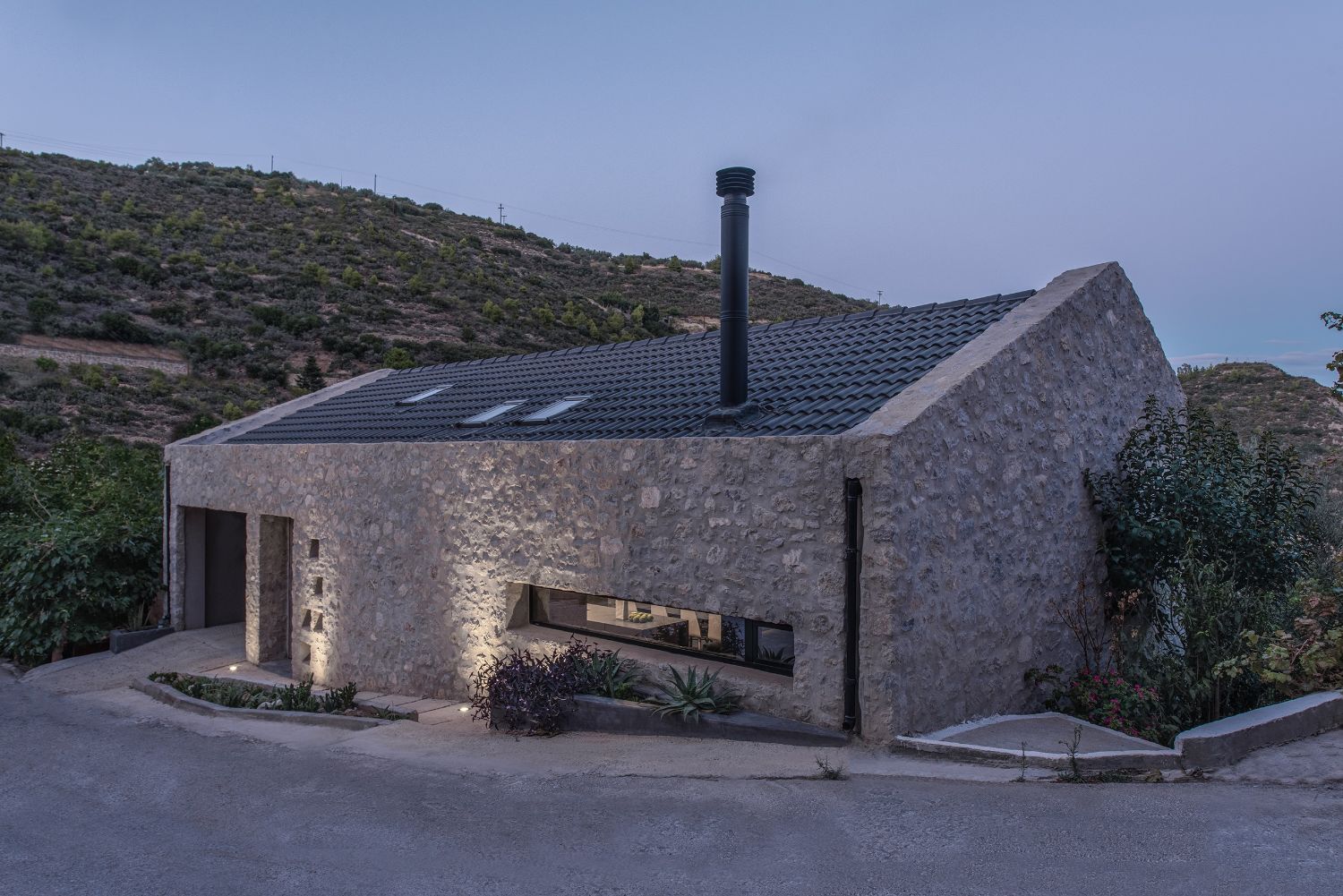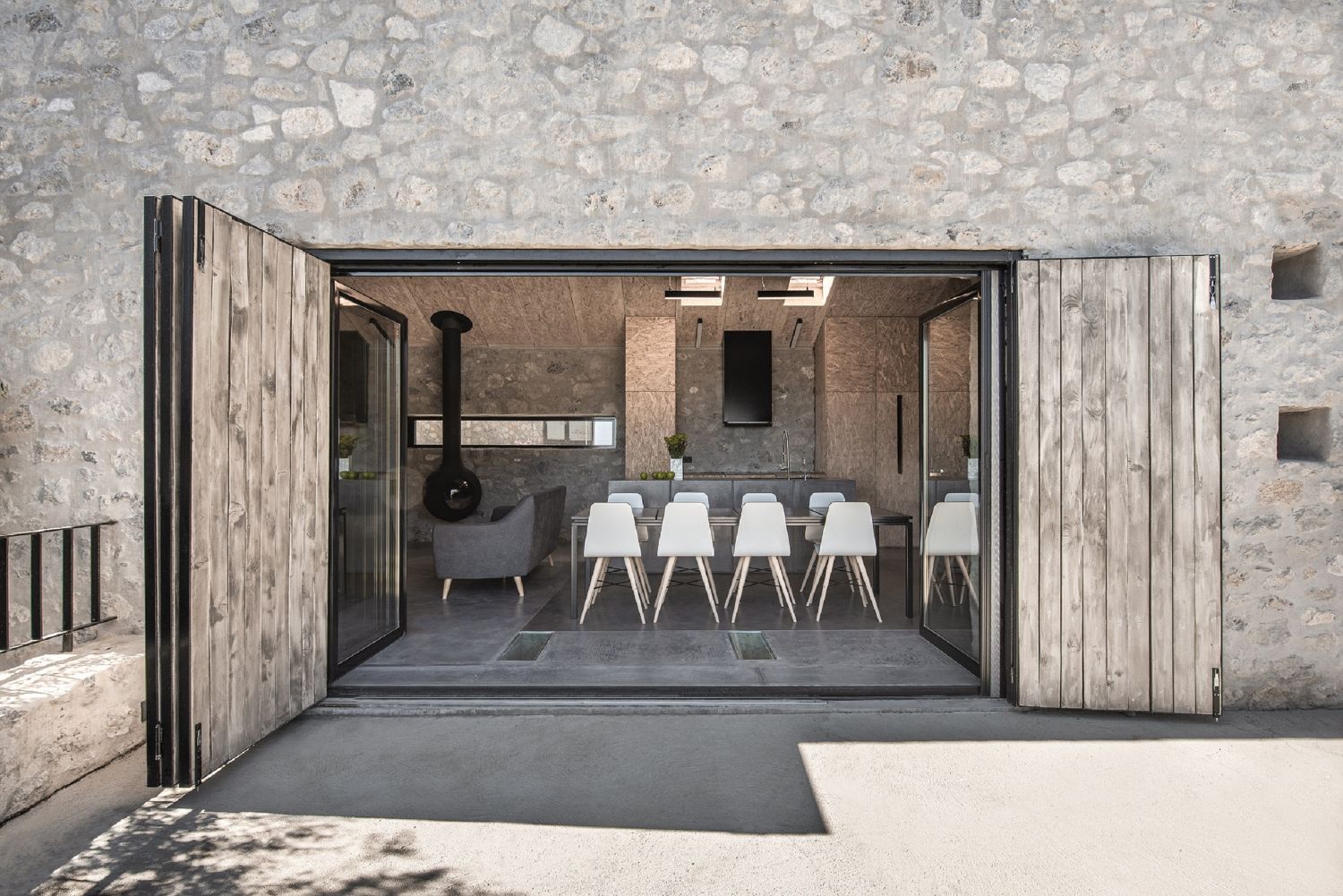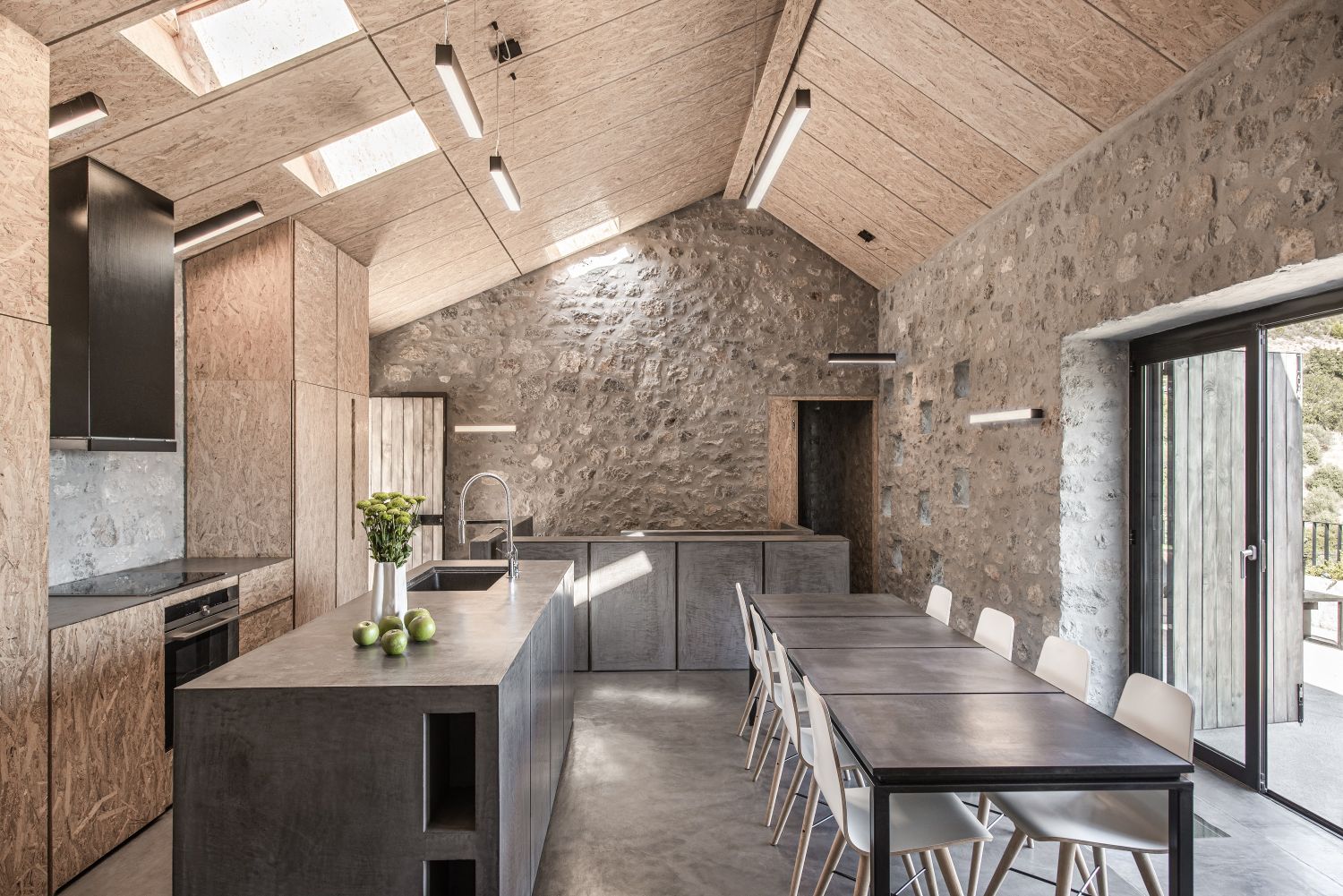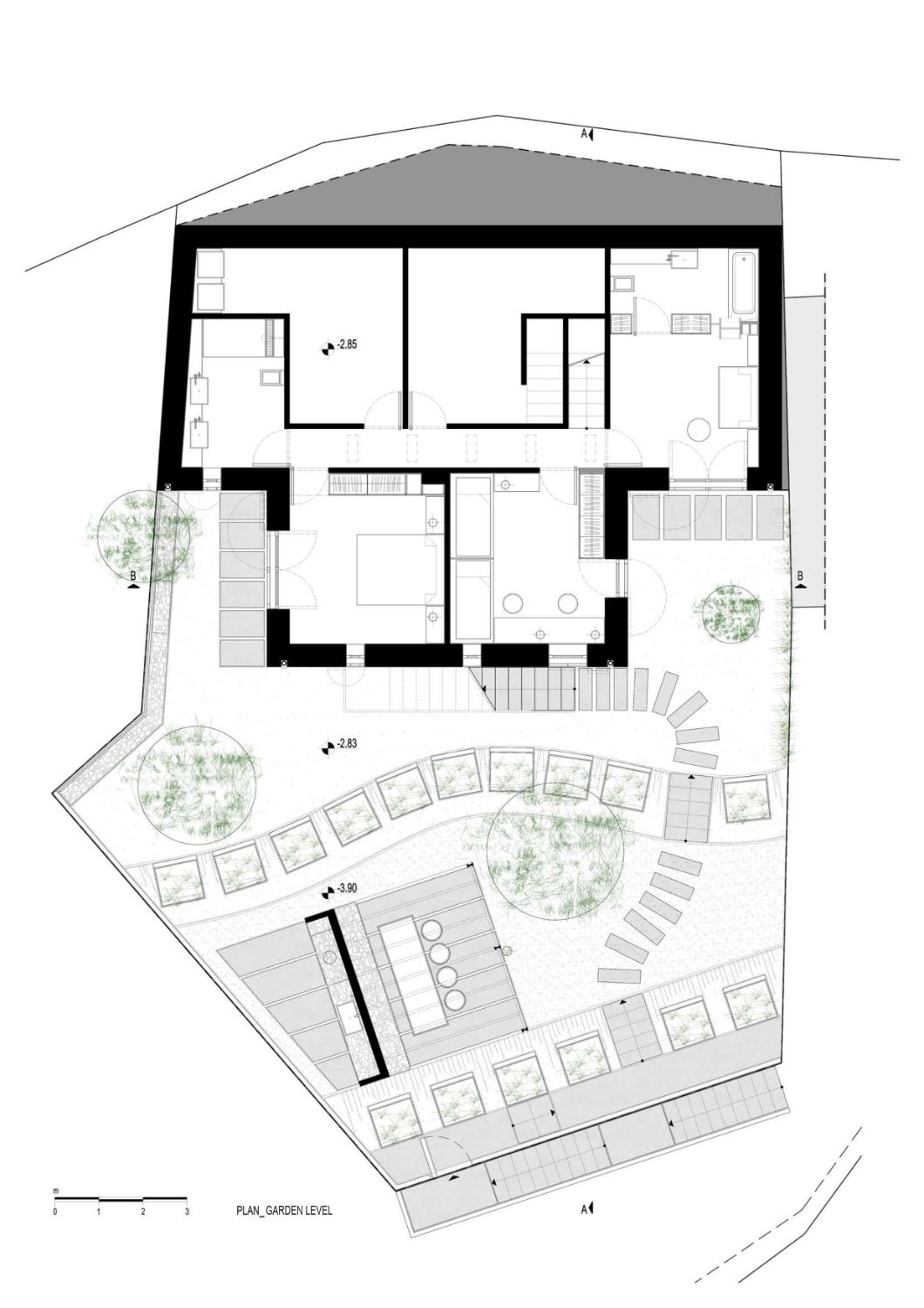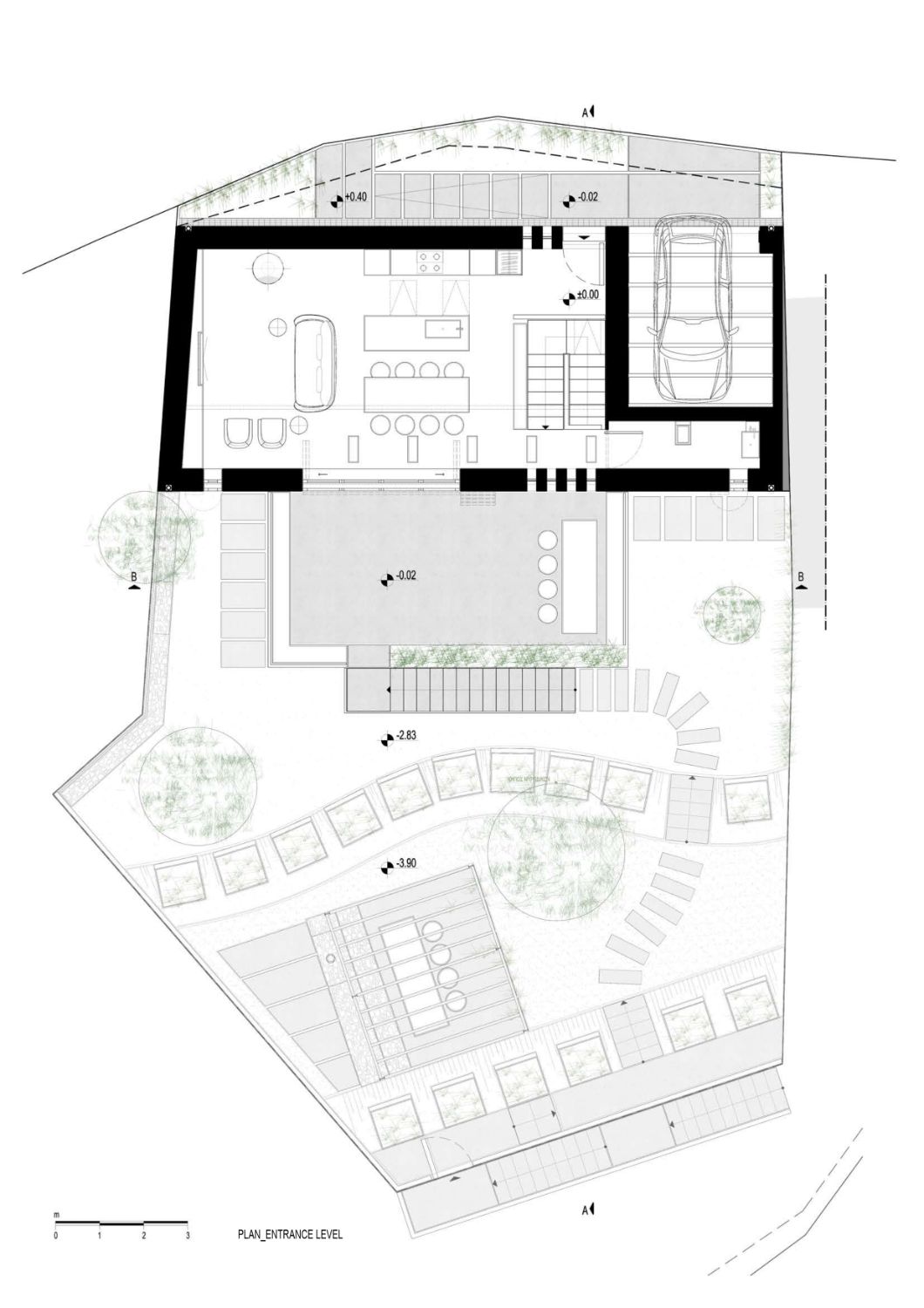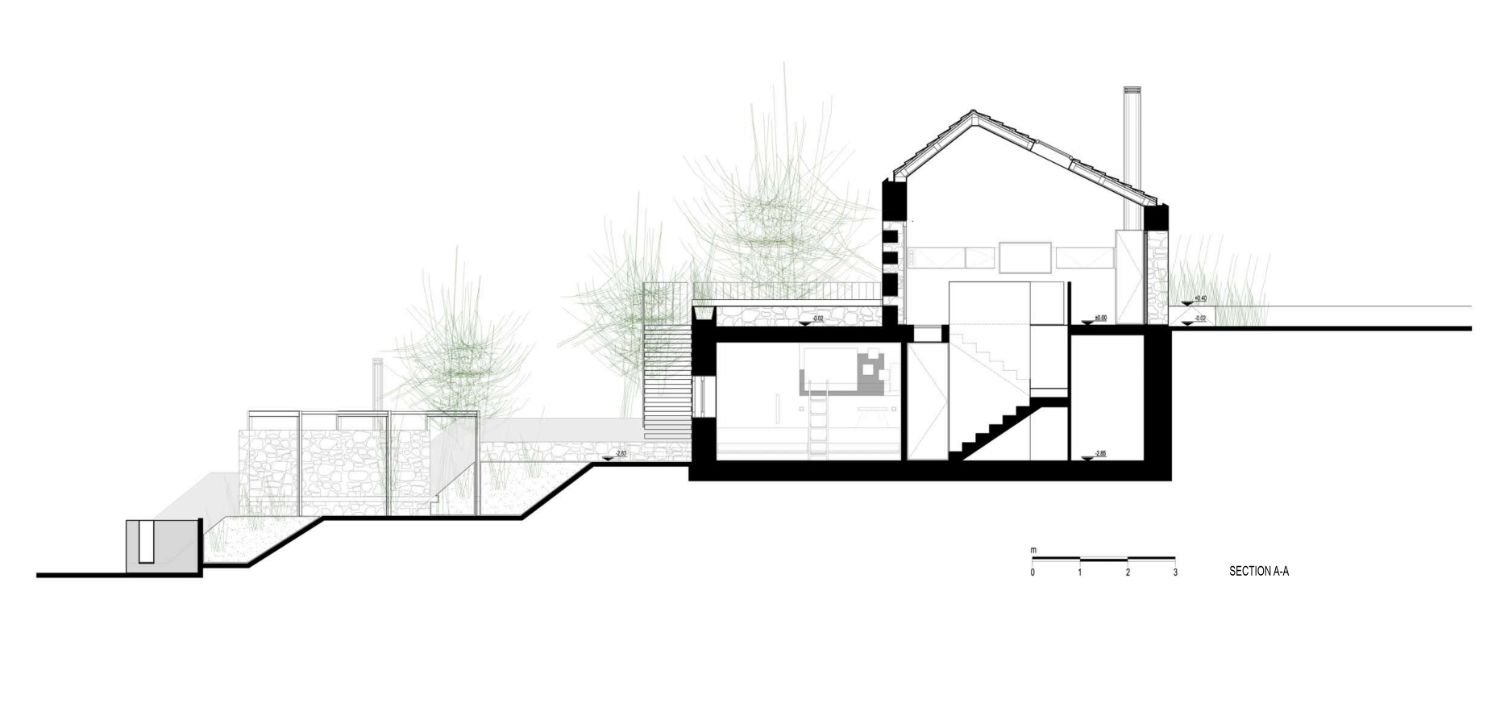Peloponnese Rural House/
Ivana Lukovic Architect
Project Details

Location(City/Country):
Kalamia, Peloponnese / Greece
Tipology:
Residential
Year (Design/Construction):
- / 2019
Area (Net/Gross):
- / 141 m2
Operational Carbon emissions (B6) kgCO2e/m2/y:
-
Embodied Carbon emissions (A1-A3) kgCO2e/m2:
-- Environmental and local economic benefits have been accomplished by specifying craftsmen and natural materials within a 100-mile radius of the construction site.
- Reclaimed stone, applied on the elevations and at the entrance level interior space, was sourced from the nearby storage and supplemented with a new one from a local quarry.
- Washed wood shutters were handmade in recycled wood and black metal frame.
- Additional openings were created on the roof, South-West, and North-East side of the building to improve natural light and ventilation.
Project description as provided by the Architects:
A plot situated in a remote, ordinary village of Kalamia, with olive groves surrounding an unobstructed view to the Gulf of Corinth, is a setting for retreat from demanding urban life, whose occupant is a nature-loving young couple with their three children. The morphology of the place – the slope with a 6m height difference from the top to the bottom, led to the decision of creating the house with a humble, stone stable-like appearance from the street side that discreetly fits into the neighborhood, while developing into the prominent, two-level construction from the garden.
Thorough contextual and materiality research was done on how to incorporate dwelling in a contemporary manner into the surrounding. A starting point of creative departure was the industrial feel of a traditional stone stable, characteristic for the Peloponnese rural areas, with its low, long, and tiled shed roof appearance.
Entrance level is approached by a ramp and represents the communal space of the dwelling. It relates through the large openings to the outdoor observation platform, suitable for stars-gazing and experiencing distant views of the sea. Additional openings were created on the roof, South-West, and North-East side of the building to improve natural light and ventilation. Communication with the garden is established by cantilevered, concrete staircase.
At the lower level, slab’s perforations in the interior corridor create a cave-like atmosphere of a private area. Bedrooms and guest suite, along with bathrooms suggest the monastic feel of the space, thanks to the basic, bespoke furnishing. Direct garden access from these places is generated with two courtyards that have the role of contemplation places.
Environmental and local economic benefits have been accomplished by specifying craftsmen and natural materials within a 100-mile radius of the construction site. Reclaimed stone, applied on the elevations and at the entrance level interior space, was sourced from the nearby storage and supplemented with a new one from a local quarry. Washed wood shutters were handmade in recycled wood and black metal frame. Cement mortar in two shades was created on site to cover floor surfaces along with custom-made plywood furniture, whereas white oil treated OSB was used for the rest of the built-in equipment. They are all echoing the past while contributing to the materiality richness.
It is important to emphasize that the entire 141m2 of habitable, custom-made space, was built with the restricted means, without compromising the initial architectural proposal.
Developed according to contemporary sustainable standards and located in a healthy environment, this house has been playing a major role in the 2020 pandemic situation, providing its inhabitants both safety and comfort.
Architectural and Interior Design: Ivana Lukovic, Architect, Athens/Greece
Collaborators: Alexandra Arampatzi, Architect, Acad drawings, Stanford Rabbit (Kostas Geranios, Architect and Orestis Mpormpantonakis, Architect), Architectural renderings.
Construction: Dr. Andronikos Theocharis, Civil Engineer.
Mechanical study: Tasos Katsaros, Mechanical Engineer.
Contractor: ELER AE.
Concrete works: SUPER BETON AE by Vasilakopoulos.
Plumbing: Giannis Marra.
Electrician: P. YFANTHS & I. VOGKLH OE.
Floor heating: TEOTHERM KOUFAKHS N MONOPROSOPH EPE.
Joinery: Koupaloglou Emmanouil.
Photo credits: Athina Souli
